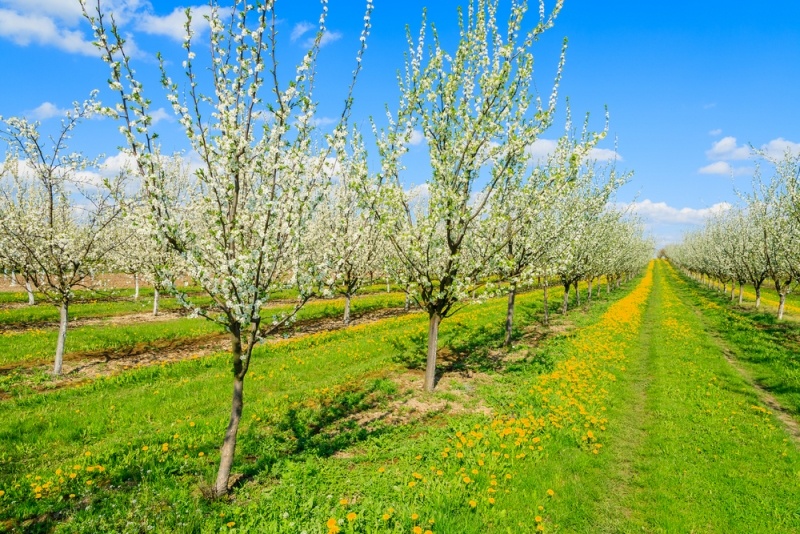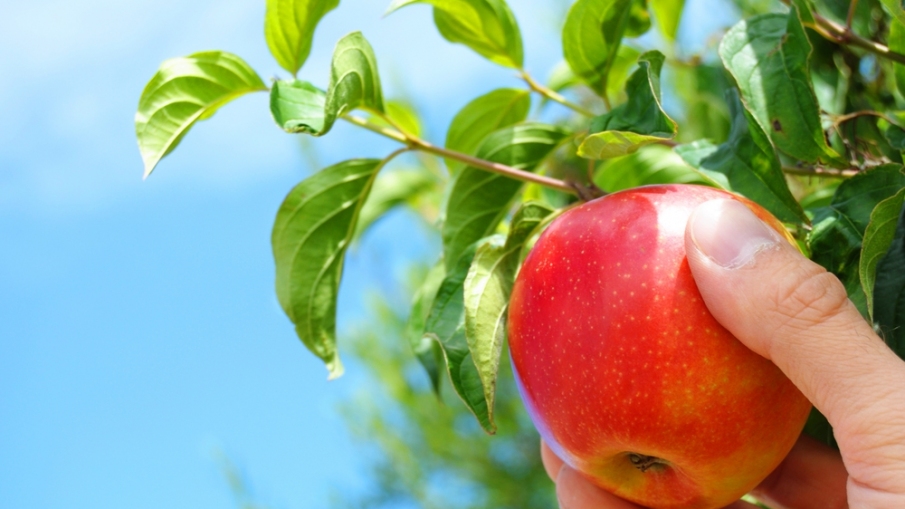Many people believe that unless you can provide bright sunlight and warmth, the trees in your yard are unlikely to grow. Often, people residing in colder parts of the country envy those living in warm and moderate climates who get to enjoy the sight of a wider variety of trees in their full glory. But here’s some good news—there are cool trees that thrive in colder weather and can be extremely rewarding to grow. While winter cold hardiness is a critical factor that can affect the growth of trees, you can choose trees that are capable of withstanding winters and cool weather.
That’s why our team at Mr. Tree has put together a list of such trees you can consider for your backyard.
-
Douglas Fir
The Douglas fir has been the state tree of Oregon since 1963. Popular as a Christmas tree, the Douglas fir thrives in cool weather conditions. The blunt-shaped cones make Douglas fir easily recognizable from a distance. These trees can be 100 to 325 feet tall when fully mature, with a trunk 15 feet in diameter. This cool tree requires moist soil for optimal growth. While the younger trees need regular watering during the initial stages of growth, mature trees only need it during drought.
If you’re planting a Douglas fir in your yard, it’s advisable to construct a burlap screen around the trees during the winter to protect them from extremely cold winds. However, make sure that the circulation is not entirely cut off. You can also add a layer of mulch near the soil to insulate it from fluctuating temperatures.
-
Apple Trees
Apple trees love cooler weather and are an excellent pick for winters in Oregon. However, it’s advisable to plant these trees during spring or summer so that they have ample time to grow before the onset of winter.
Apple trees do well with sandy soil and must be watered weekly. Once the tree matures, you can stop watering it too frequently. You should also not skip on mulch for apple trees as it helps the soil to retain the moisture content and keeps weeds at bay. Always provide ample room for such trees so that they can grow and flourish properly. Many people prefer planting apple trees on a slope to protect them from cold, harsh winds during winter.
If you want to enjoy a lush harvest from the trees, make sure you get rid of broken branches periodically. Schedule periodic pruning and trimming for the trees to keep them shipshape. Rimming and shaping can prevent the tops of the trees from becoming too dense with foliage.
-
Spruce Trees
If you want to plant trees in your yard that double as privacy screens, spruce trees are a great option. Variants such as the Norway spruce thrive well in the northern parts of the United States, even though it’s not native to the Pacific Northwest. These trees grow fast and can reach 60 feet tall. They have dark green needles.
You can also opt for a Colorado blue spruce, with lovely blue foliage, to ramp up your yard’s aesthetics during the festive season. If you don’t have enough space in your yard, a dwarf Alberta spruce is an option you can consider. While this tree has dense foliage, it doesn’t need any trimming.
Spruce trees grow well in different types of soil, including clay, loam, and sandy. While these trees prefer strong sunlight for at least six hours a day, they also tend to do well in full or partial shade. As spruce trees are incredibly hardy against cold winter conditions and need minimal care, they’re an ideal option for your yard, regardless of your experience with growing and caring for trees.
-
Birch trees
If your goal is to create a winter wonderland and simulate an enchanted forest right in your backyard, birch trees can be a great addition. Even though birch trees shed their leaves before winter, the bark still makes for a compelling sight. You can opt for river birch trees, which grow really well in Oregon. Make sure to give these trees plenty of room to grow.
River birches grow well in most soil types, including moist, sandy, well-drained, wet, and loamy soils. They are tolerant to moist or wet conditions and resistant to birch borers. It’s always advisable to add a thick layer of mulch near the soil to keep it cool and wet.
As the name suggests, river birches thrive near water bodies or riverbanks. So you can plant these trees if your yard has heavy and wet soil. You can also plant these trees to line a pond or stream in your yard. While full sunlight is recommended for river birches, they also do well with partial shade.
-
Plum Trees
If you’re keen on having fruit trees in your yard during the winter, plum trees are a great choice. These trees grow best in sandy soil with good drainage. Like apple trees, it’s advisable to plant these trees on a slope to protect them from cold air. The best time to plant a plum tree is in spring when it can enjoy full sunlight.

During the first year after planting the tree, ensure that it receives adequate water. However, be careful because it can be very easy to overwater the tree. Keep an eye on pests and weeds, as they can completely destroy your tree if not dealt with.
For healthy tree growth, make sure you schedule pruning and tree care at regular intervals. Pruning ensures that the tree receives sufficient sunlight and nutrients. However, resist the temptation of pruning the tree on your own. Pruning requires special tools and know-how and is best left to the experts. Our qualified team of arborists at Mr. Tree will be delighted to assist you with all your pruning needs. We can provide guidance about the various winter-hardy trees you can plant in your yard. To get a free quote for pruning, contact us today.


Leave a Reply